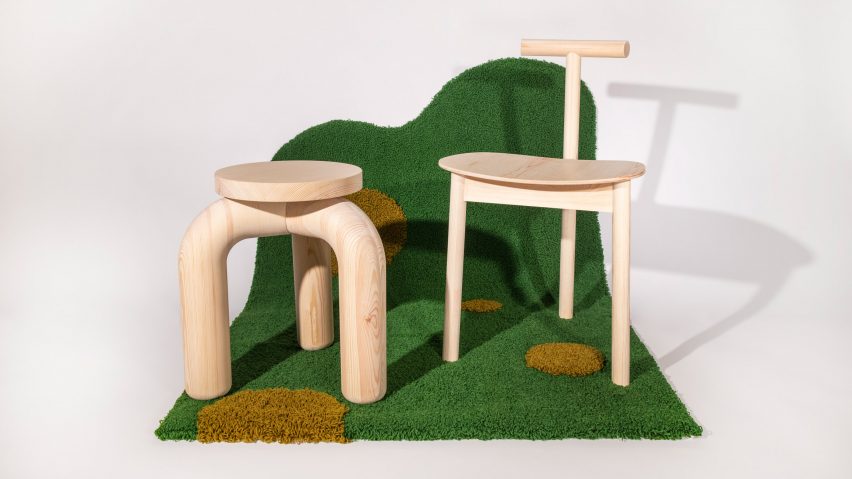
Studio Sløyd's Furuhelvete collection challenges perceptions of "outdated" pine furniture
Designers Studio Sløyd developed a collection of chunky pine chairs to demonstrate a contemporary take on a wood it feels is unfairly neglected.
The Furuhelvete furniture collection currently comprises a chair and a stool designed by Studio Sløyd to explore different characteristics of pine wood. A forest-coloured rug completes the set.
Pine grows abundantly in Norway and has been used for centuries for building houses and making furniture, but has fallen out of fashion.
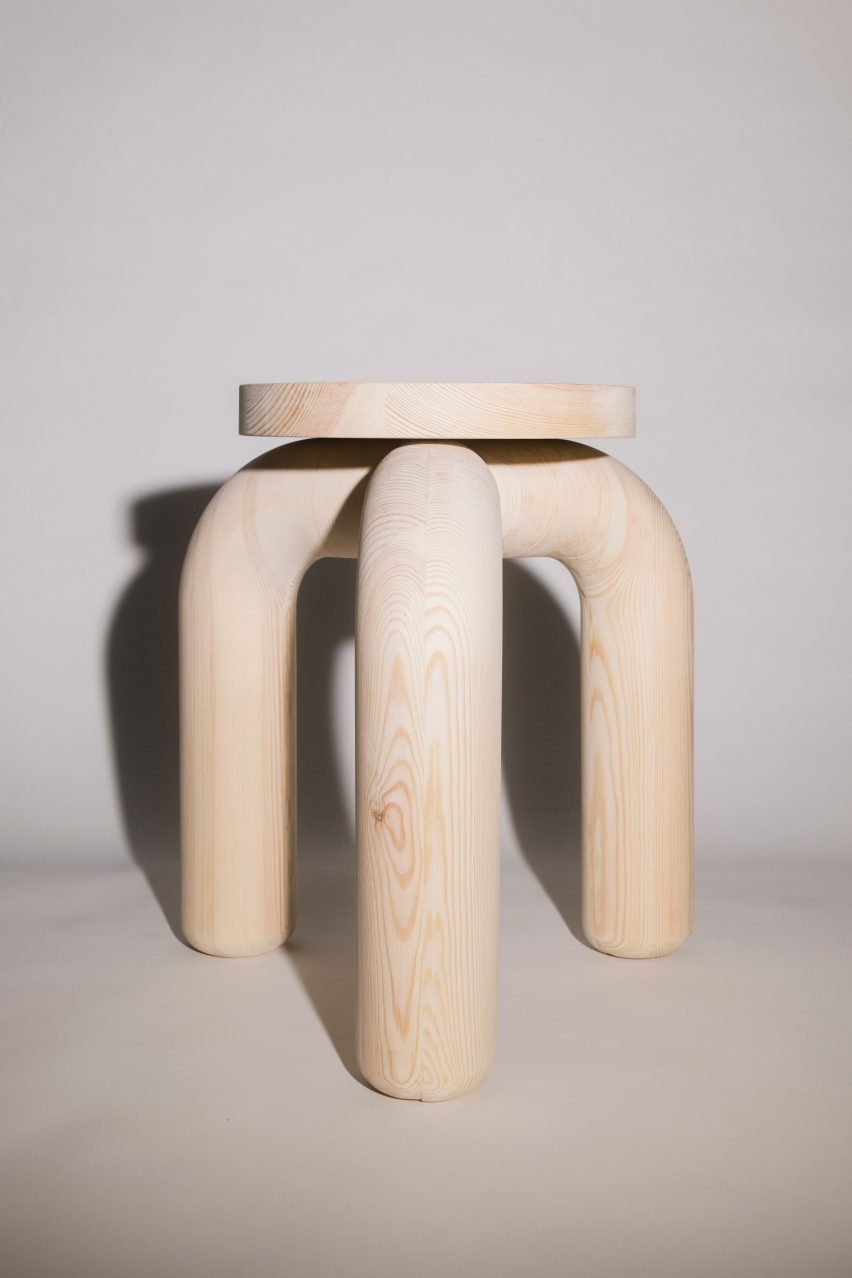
Designers Herman Ødegaard, Mikkel Jøraandstad and Tim Knutsen observed that the use of pine declining in recent years. They want to help re-establish its reputation as an attractive and reliable material.
"Furuhelvete is a Norwegian expression stemming from the overuse of pine in Norwegian homes and cabins, often associated with a style that is considered distasteful or outdated," Studio Sløyd explained.
"With the Furuhelvete collection we wish to challenge the traditional perception of the wood and create a new interest for this local and wonderful material."
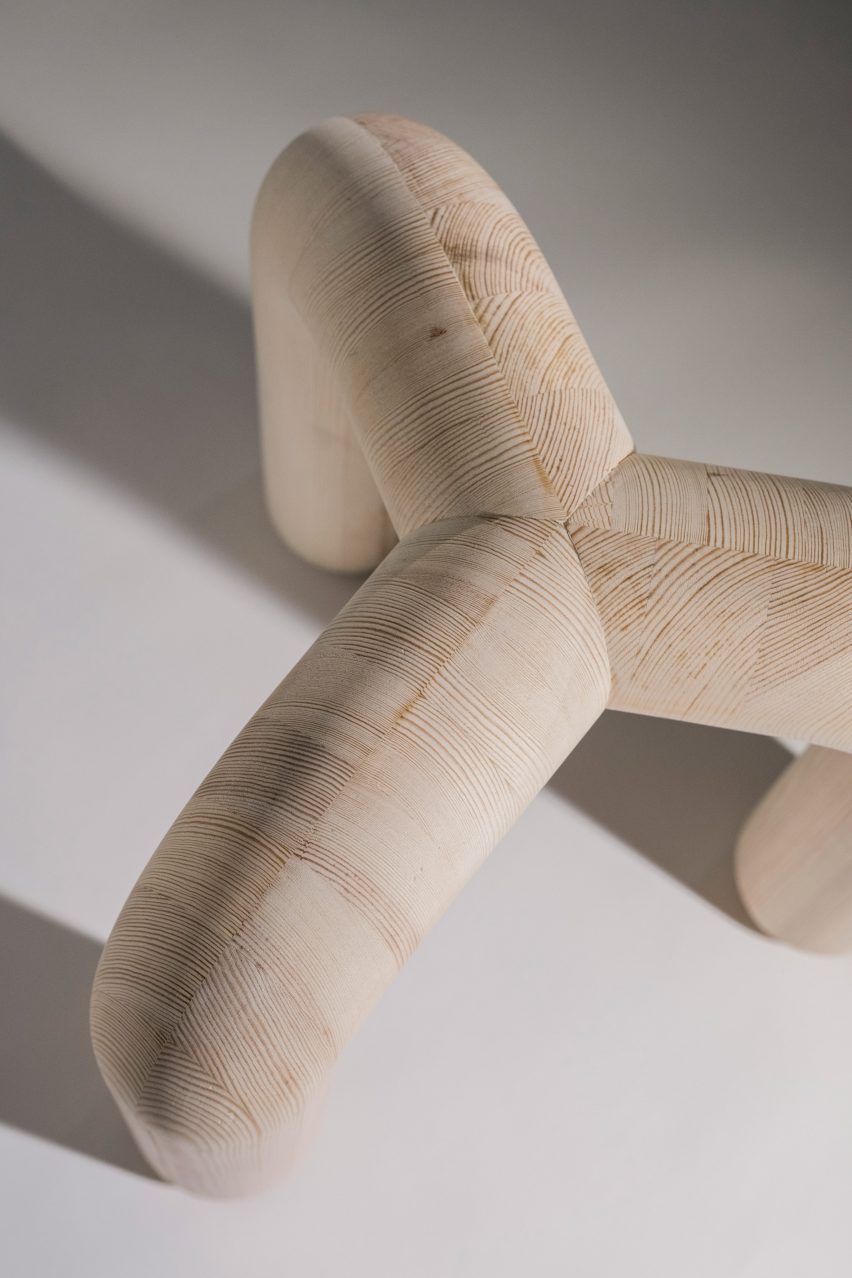
The design trio exhibited their work at the Stockholm Furniture Fair, where they told Dezeen that the collection will expand to include a table, cabinet, lamp and bench, all made using pine.
"We want to make pieces that work with the structure of the wood and to highlight its positive qualities by creating more contemporary shapes," explained Jøraandstad.
The three-legged stool was produced using a computer-controlled milling machine, resulting in a chunky profile that Jøraandstad described as "a big canvas to showcase the material".
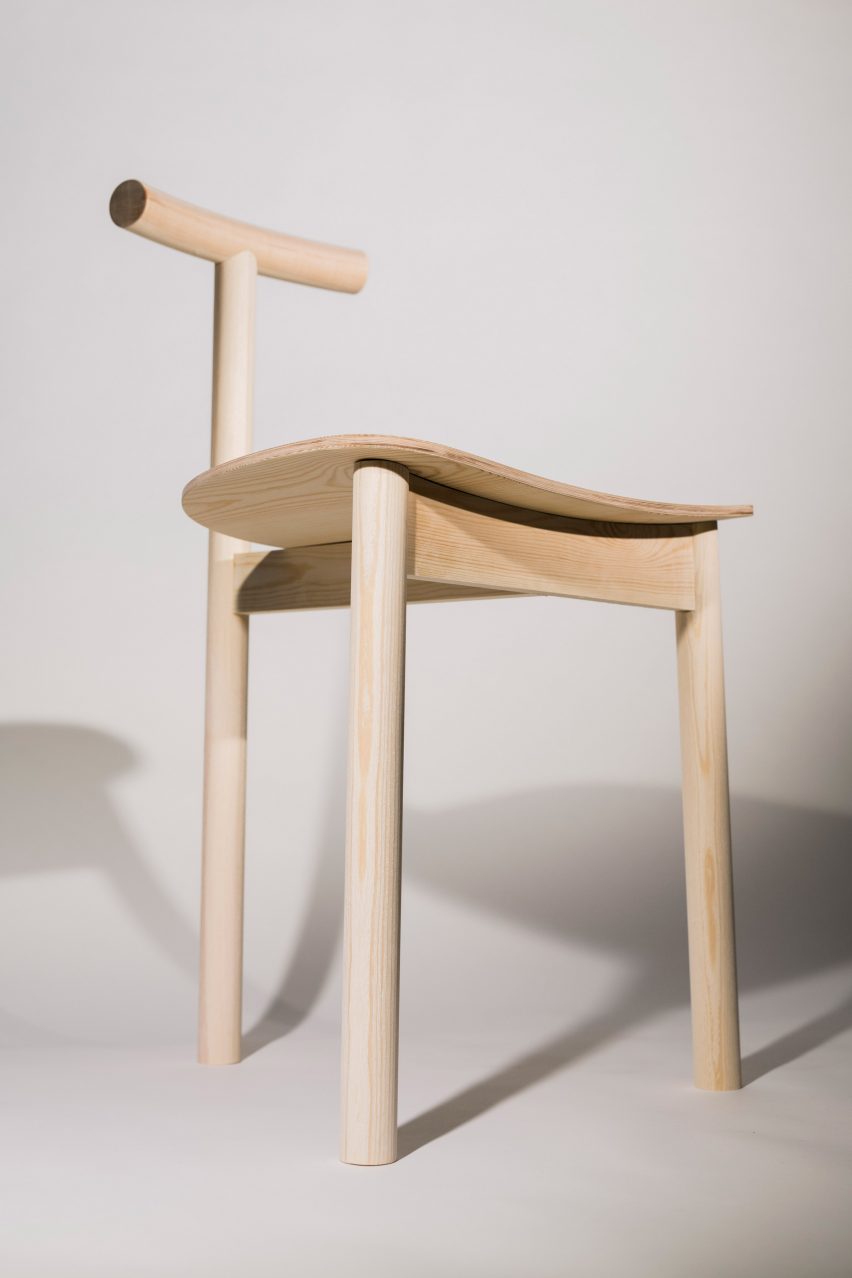
The solidity of the form provides a counterpoint to the perception of pine as a material used in poor-quality construction. A special joint was devised to create a seamless and sturdy intersection between the three pieces.
This chair also aims to demonstrate how a wood that is often thought to be too soft for furniture making can be used to create a robust and attractive product.
A gently curved seat is supported by a tripod frame that intersects with a minimal backrest. Both seating designs are left unfinished to highlight the attractive wood grain and were carefully hand sanded to create a smooth, high quality finish.
The rug was designed as a romanticised abstraction of a Norwegian pine forest in autumn. It was made by Ødegaard using a traditional hand-tufting process and took around a month to produce.
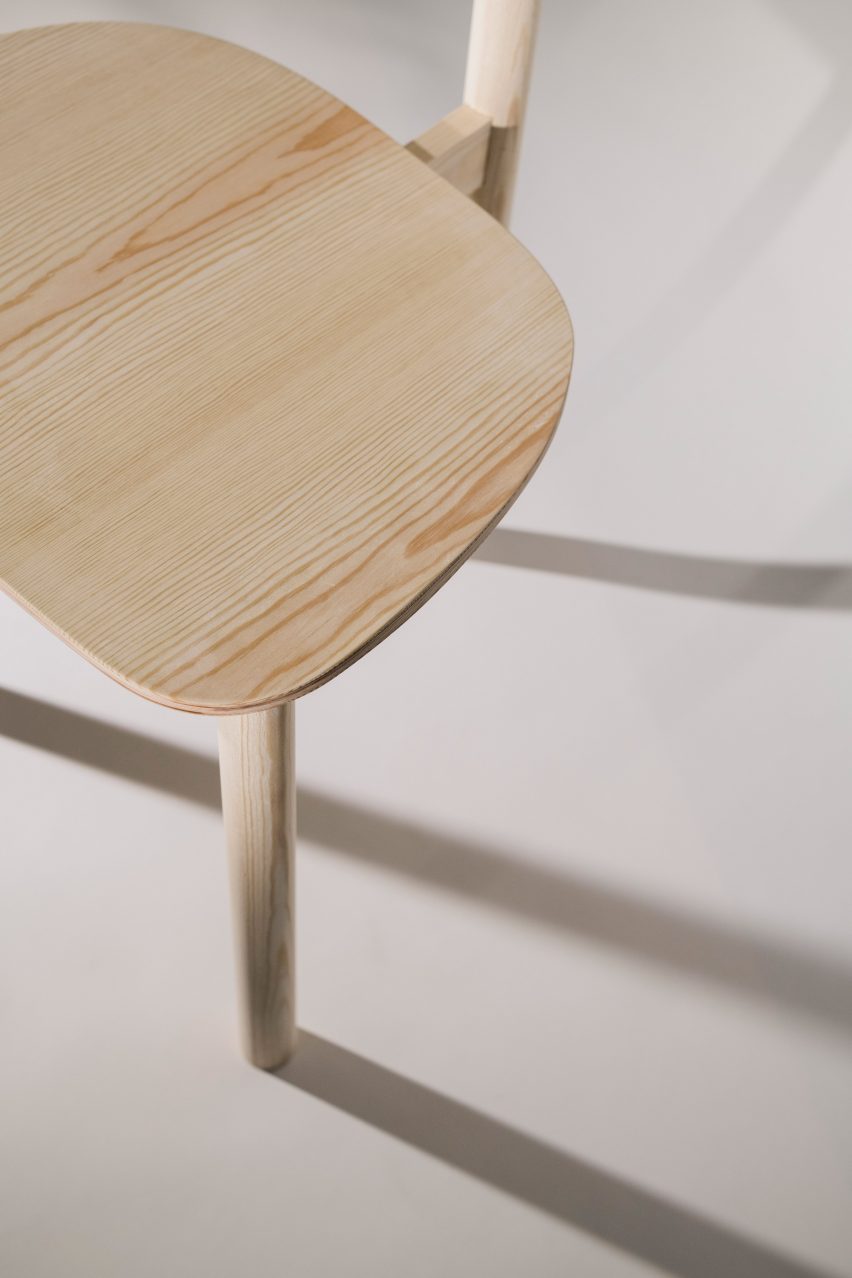
In addition to their aesthetic and functional properties, the pieces are intended to help communicate important social and environmental messages.
"We still import wood to make furniture which has a huge environmental cost," Jøraandstad pointed out. "This is so unnecessary when we have such a great material on our doorstep."
"We imagine these pieces would look great in contemporary Scandinavian homes," he added. "Right now this is a starting point to encourage designers in Scandinavia to use the material more."
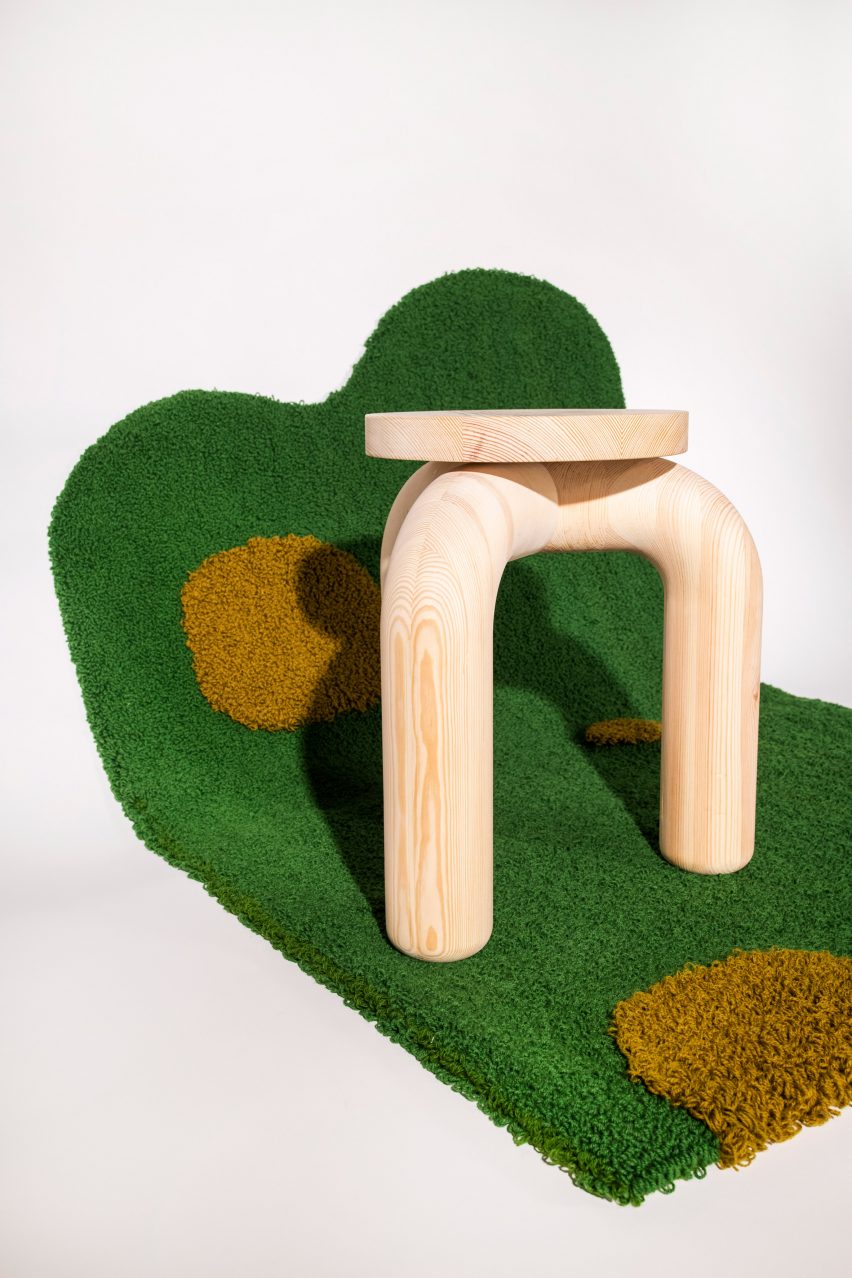
Ødegaard, Jøraandstad and Knutsen founded Studio Sløyd while studying at the Oslo School of Architecture and Design.
They will all graduate this year and plan to continue developing projects that focus on exploring and respecting materials.
Students from the Estonian Academy of Arts also presented a collection of furniture at the fair that offered a unique take on a material. Dig Where You Stand is set of six objects made from limestone, a material that is usually only used for surfaces.
Swedish designer Kajsa Melchior used an unusual method of sand-casting to create her collection Fictive Erosion, which was also showcased at the Stockholm Furniture Fair.